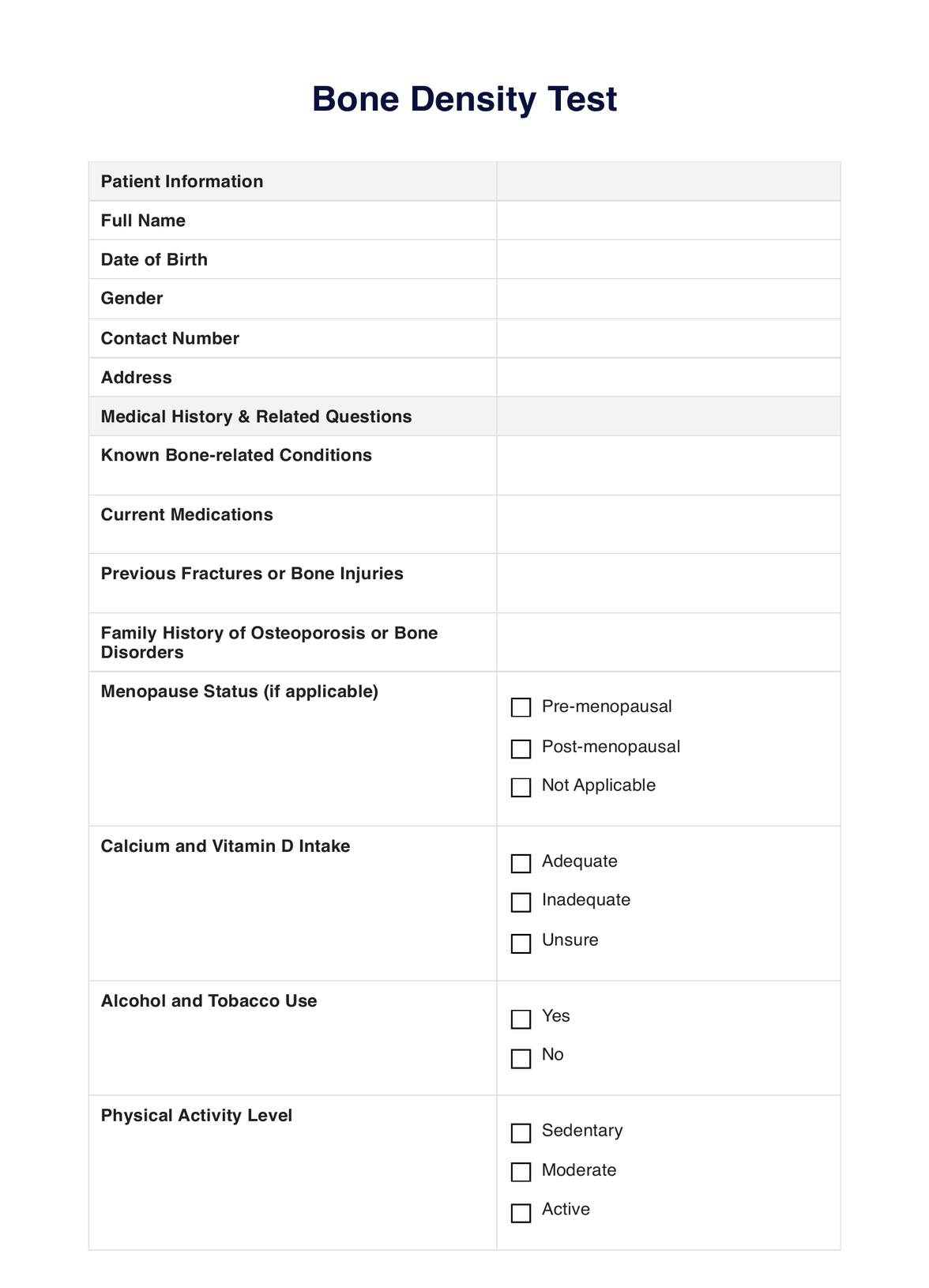Carepatron combines an intuitive interface with advanced technology, ensuring accurate results while prioritizing user security and data protection.

Bone Density
Discover the benefits of using Carepatron for bone density analysis. Accurate, secure, and user-friendly—the top choice for healthcare professionals!
Use Template
Bone Density Template
Commonly asked questions
Carepatron utilizes advanced algorithms and a vast database, guaranteeing that each test is analyzed precisely.
Absolutely. Carepatron implements top-tier encryption and data protection measures, ensuring the privacy and security of all user information.
EHR and practice management software
Get started for free
*No credit card required
Free
$0/usd
Unlimited clients
Telehealth
1GB of storage
Client portal text
Automated billing and online payments











